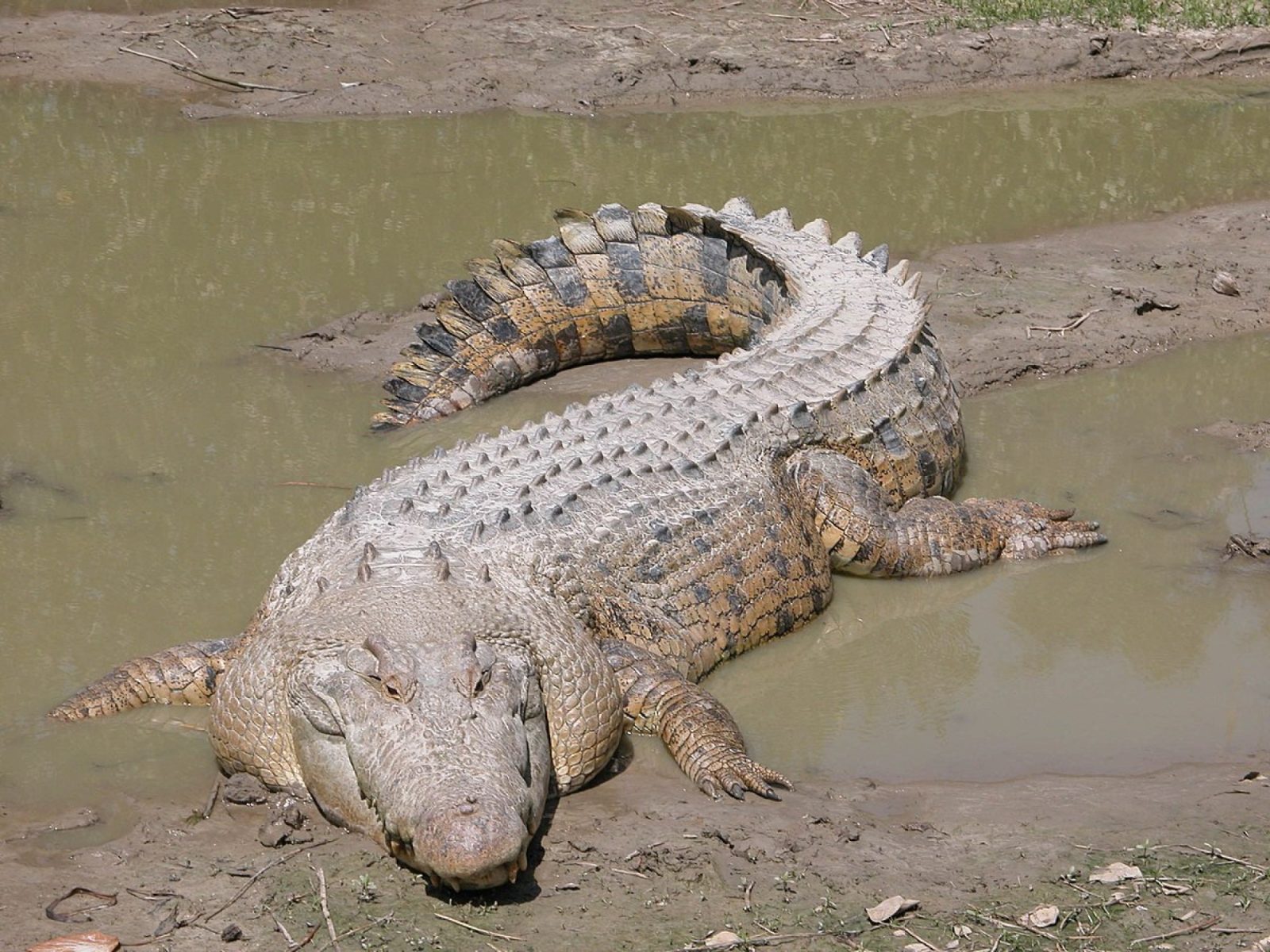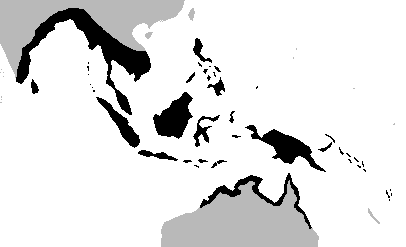
Saltwater crocodile

As can be seen from the map to the left, this crocodile species can be found along the coasts of much of South-eastern Asia and Northern Australia.
It is the largest crocodilian species, growing to 6m (6.3 m is the record) or around 20 foot and weighing 1000kg to 1500kg.
It is an opportunistic predator, grabbing any prey in its territory and pulling it under till it drowns. Prey includes sharks, fish, crustations, amphibians reptiles birds and mammals – which include humans. Borneon and Siamese crocodiles are both similar, though Borneon ones can be easily indentified due to various specific characteristics.
While max size is now estimated to be 6.3m, it is thought that in the past there may have been individuals that exceeded 7m. Heavy poaching targeted the larger crocs, so these are now very rare (and as they keep growing, the biggest are generally the oldest). Females are far smaller at 2.7-3.5m in length. Potentially, in the past, its range would have gone as far as China, with various accounts of attacks from animals that sound very like this species.
Australia’s saltwater crocodile population is thriving, with as much as 100,000-200,000. While they are clearly not endangered overall, their are areas of their range where they are far less secure. As a result, the are listed as Appendix ii in Australia, Indonesia and New Guinea, and Appendix i everywhere else.
Given their ability to swim long distances, they occasionally appear in places they are not normally seen, such as Fiji.










